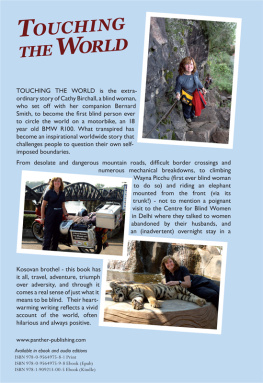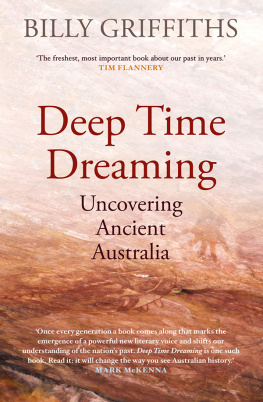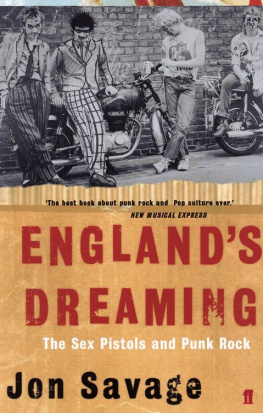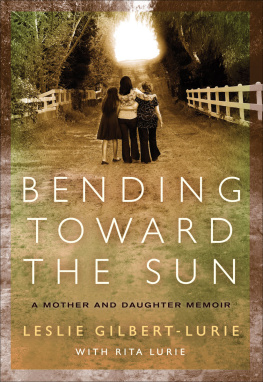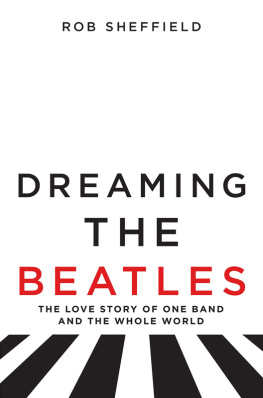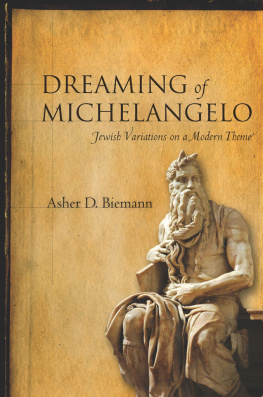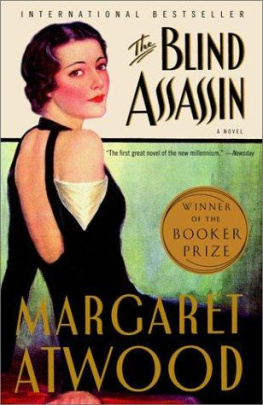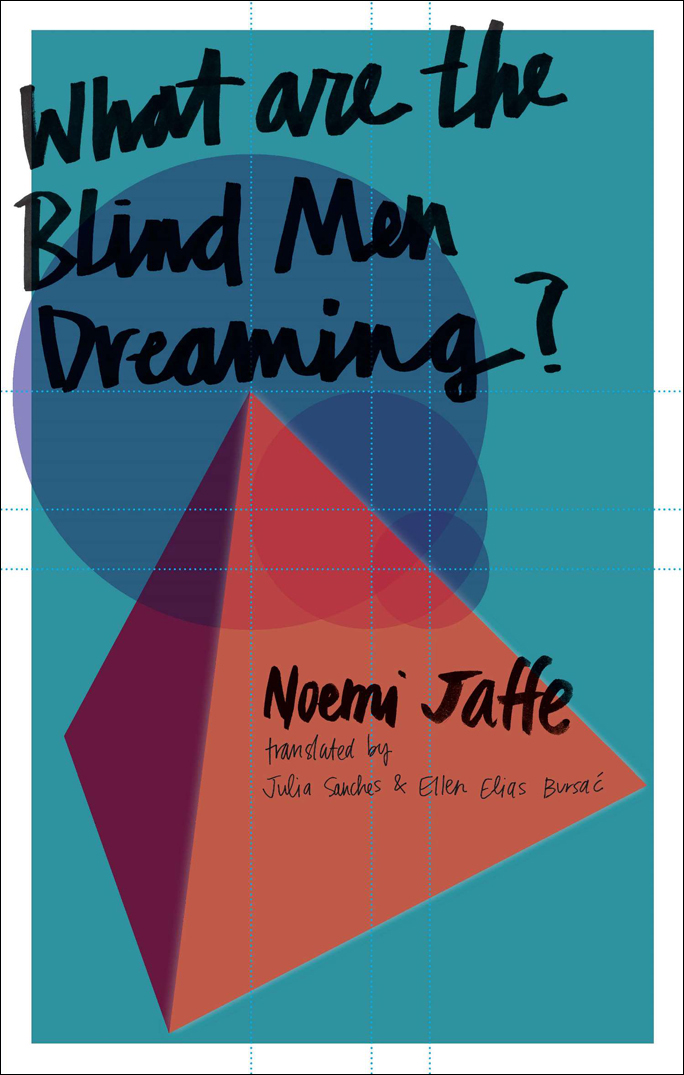Table of Contents
Guide
Jaffe adds to Brazils well-established tradition of Jewish writing, which includes the likes of Clarice Lispector and Moacyr ScliarWhat Are the Blind Men Dreaming? is an exquisite and original meditation on the temptation, in some distant and inhospitable part of your memory, to have been in the survivors place.
BRUNA DANTAS LOBATO, Ploughshares
THIS IS JUST ANOTHER STORY that will lose itself in the sea of survivors stories, each one of them unique. There are no clear cut motives for telling this story. Both daughters and mothers motives are uncertain, yet must be exposed: they are telling this story so that they might learn something, so that they might understand their memory and their forgetting, so that Mothers own micro-story might be inscribed onto the body of the world. These words can come to replace the memory she lost; not only because it is through them that it is told, but because these words can be used to anchor something whose natural tendency is to disappear. First of all, this book is an anchor for what Mother herself forgets. Secondly, for the daughter, this book is a token of what it is to try to be another persons memory, to be her mothers memory.
Finally, this book is simply the daughters attempt to come to know her mother better.


Deep Vellum Publishing
3000 Commerce St., Dallas, Texas 75226
deepvellum.org @deepvellum
Deep Vellum Publishing is a 501c3
nonprofit literary arts organization founded in 2013.
Copyright Noemi Jaffe, 2013
Originally published in Brazilian Portuguese in 2012 as O que os cegos esto sonhando? by Editora 34, So Paulo, Brazil
Published by special arrangement with Villas-Boas & Moss Literary Agency & Consultancy and its duly appointed Co-Agent 2 Seas Literary Agency.
English translation copyright 2016 by Julia Sanches and Ellen Elias-Bursa
First edition, 2016. All rights reserved.
Excerpt of the poem Death Fugue on pages 126-128 from Paul Celan: Selections, by Paul Celan, edited by Pierre Joris 2005 by the Regents of the University of California. Published by the University of California Press.

Work published with the support of the Brazilian Ministry of Culture / National Library Foundation.
Obra publicada com o apoio do Ministrio da Cultura do Brasil / Fundao Biblioteca Nacional.
ISBN: 978-1-941920-37-4 (ebook)
Library of Congress Control Number: 2016950336
Cover design & typesetting by Anna Zylicz annazylicz.com
Text set in Bembo, a typeface modeled on typefaces cut by Francesco Griffo for Aldo Manuzios printing of De Aetna in 1495 in Venice.
Distributed by Consortium Book Sales & Distribution.
Table of Contents
Noemi Jaffe
In April of 1945, approximately a year after she was taken by the Nazis from her hometown, Senta, in what is now Serbia, and after she had been a prisoner in Auschwitz and Bergen-Belsen, my mother, Lili Jaffe (ne Stern) was saved by the Red Cross and taken to Sweden. In Malm, where she was quarantined along with her three cousins, who had been with her throughout it all, she wrote a war diary in which she tried to recreate those recent events that seemed to her most important: that morning in Senta when she, her brother, and her parents awaited the arrival of the Germans; the many cities she was taken through; her arrival in Auschwitz; her transfer to other camps and work places; and, finally, her liberation. But, beyond being an account of these tragic experiences of war, what I find memorable in this diary are the passages that recount the days after her liberation: the arrival of the Americans; how they were welcomed by the Swedes and the Danes; the enormous quantities of food; her rediscovery of femininity; her preoccupation with beauty; her new loves; her longing for her parents; the expectation of returning home and finally knowing who else in her family had survived.
Ive decided to retain some of the particularities of my mothers writing in her diary in order to preserve the spontaneity and the intensity with which it was written. Her intention, in Sweden, had been to narrate these events not as if they were being written a posteriorias they in reality werebut to give the sense that they were being written as they were lived, which would have been impossible, since pens, pencils, and paper would have been unfathomable during the war. But, because this writing took place after the fact, mixing testimony and memory, it gave rise to variegated verbal tenses, dates that move confusingly backward and forward in time, and imprecisions. I chose to preserve this disorientation, precisely in order to be faithful to what my mother was living at the moment she decided to write.
She had never been in the habit of writing. And yet, shed insisted in registering these recent occurrences, after her experience in the concentration camp, with impressive lyricism and aplomb. While writing this book, I asked her why shed wanted to write the diary, to which she immediately responded: So you could read it!
Id known about the existence of the diary throughout my adolescence; it existed then as a mystery, a treasure that I, somewhat unconsciously, didnt want to unveil. But later, as an adult, after being approached by a frienda filmmaker who had become interested in my mothers story and in her diarymy sisters and I insisted that my mother translate it into Portuguese. After a few failed attempts to have it published, and after some short news coverage with my mother where she was treated like the Brazilian Anne Frank, we temporarily gave up.
During a visit to Israel, where my sister lives, the two of them decided to take the diary to Yad Vashem, where they planned to donate it for conservation and consultation purposes. It so happens that the diary itself has an internal narrative: my father had fallen in love with my mother during their return to Serbia in 1945 and, before he left for Hungary, certain that they would never see each other again, my mother offered him her diary as a reminder of their friendship.
In Hungary, my father filled the remaining pages of the diary with declarations of love and speculations on life and war. But, one year later, as fate would have it (as my mother would say), she found him in Hungary, where she had gone in search of her identity papers, which had gone missing in the former Yugoslavia. In the end, they were married and moved to Brazil with the diary in their suitcase.
The Serbian employees of Yad Vashem read about this romance in my mothers diary and were anxious to know what had happened with the relationship between the two young lovers. Had they been married? Did they see each other again? Certain that this diary stood out from all the other objects in the museum, they reached out to the Spielberg Foundation and insisted that a crew film my mother telling her story. When they heard that the diarys protagonists had gotten married, they celebrated ecstatically. Today that film, along with the diary, is cataloged in the museum whose goal is to collect the testimonies of all WWII survivors. In this book, I have opted not to publish the parts that were written by my father, as they serve more as an appendix to the diary.
Next page

